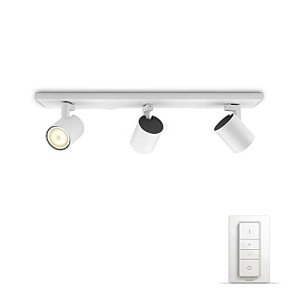15 Secretly Funny People In Interior Lighting UK
Interior Lighting in the UK: A Comprehensive Guide
Interior lighting plays an essential function in developing an environment, boosting performance, and revealing individual design within homes and companies. In the UK, where the weather condition can be unforeseeable, effective lighting is not just about aesthetics however also about making areas feel warm, inviting, and practical. This post explores various aspects of interior lighting, incorporating types, patterns, ideas, and frequently asked questions.
Comprehending the Importance of Interior Lighting
Lighting is typically thought about the foundation of interior style. UK Lighting Company affects mood, performance, and the viewed size of areas. The right lighting can:
- Enhance the architectural functions of a room.
- Highlight art work and decor.
- Enhance safety and security.
- Impact performance in work spaces.
- Create a comfortable atmosphere for relaxation.
Kinds Of Interior Lighting
Efficient lighting style generally includes three main kinds of lighting: ambient, job, and accent.
1. Ambient Lighting
This is the main source of light in a room, supplying overall illumination. Typical sources include:
- Ceiling-mounted fixtures
- Chandeliers
- Recessed lighting
- Soft wall sconces
Ambient lighting creates a foundation from which other lighting types can build on.
2. Job Lighting
Task lighting concentrates on particular locations to facilitate activities such as reading, cooking, or working. This type of lighting assists to lower eye stress and can considerably affect functionality. Typical sources include:
- Desk lamps
- Under-cabinet lights in cooking areas
- Reading lamps beside beds
- Mounted lights focused on work surface areas
3. Accent Lighting
Accent lighting includes drama and highlights particular items or locations, such as art work or architectural features. This type of lighting can produce visual interest and depth in a space. Sources include:
- Picture lights
- Decorative lamps
- Uplighters
- LED strip lights along racks
Using a mix of these lighting types can cause a healthy and multifunctional space.
Popular Lighting Trends in the UK
The interior lighting landscape in the UK continues to develop, affected by design trends, technology, and consumer preferences. Here are some popular patterns to view:
Smart Lighting: The arrival of smart innovation has actually transformed how individuals handle lighting in their homes. Smart bulbs and systems like Philips Hue enable users to control brightness and color temperature via their mobile phones.
Minimalist Designs: Sleek, basic styles that blend flawlessly with interiors are dominating the market. Pendant lights with fragile frames, LED strips, and geometric shapes are particularly stylish.
Industrial Lighting: This trend showcases raw, bare products. Metal fixtures and Edison bulbs provide a vintage touch that is both elegant and functional.
Eco-Friendly Options: With increasing awareness of sustainability, many customers are turning to energy-efficient LED alternatives and fixtures made from sustainable materials.
Tips for Effective Interior Lighting Design
Creating a reliable lighting plan needs thoughtful factor to consider of numerous elements. Here are some tips:
Consider the Purpose of Each Room: Every area has a various function. Consider what activities will happen and what type of lighting will support those activities.
Layer Lighting: Employ multiple types of lighting within a room to create depth and versatility. Integrate ambient, task, and accent lighting to enhance both visual appeals and performance.
Usage Dimmers: Dimmers enable control over brightness levels, allowing users to change lighting according to state of mind and time of day.
Incorporate Natural Light: Make the most of natural lights like windows. Use light, reflective colors for walls and furnishings to make the most of brightness.
Think Of Color Temperature: Different color temperatures (determined in Kelvins) develop various environments. Warmer temperature levels (around 2700K-3000K) are cozy, while cooler temperature levels (4000K+) provide a more scientific or energetic feel.
Interior Lighting Mistakes to Avoid
To develop a well-lit area, it's important to avoid common lighting pitfalls. Here are some errors to view for:
Underestimating Wattage: Insufficient wattage can lead to dim, unwelcoming spaces.
Ignoring Scale: Fixtures that are too little for a room can keep an eye out of place, while oversized fixtures can overwhelm an area.
Over-reliance on Ceiling Lights: Relying entirely on overhead lighting can develop uninviting shadows; balance with additional lighting types.
Poor Placement: Misplaced lights can develop locations that are too bright or too dark. Strategy placements attentively.
Frequently asked question Section
1. What is the distinction between warm white and cool white light?
Warm white light (2700K to 3000K) creates a comfortable, inviting environment, best for living rooms and bedrooms, while cool white light (4000K to 5000K) is more matched for work spaces as it enhances concentration and clearness.
2. How can I optimize natural light in my home?
To maximize natural light, use light-colored walls, tactically place mirrors to reflect light, and choose for sheer window coverings that allow sunlight to pass through.
3. How do I choose the best lighting fixture?
Think about the size of your area, the style of your decoration, and the function of the location. Make sure the scale of fixtures matches the room and matches the general visual.
4. Are LED lights much better than traditional bulbs?
Yes, LED lights are more energy-efficient, have a longer life-span, and can supply a series of color temperature levels, making them a more sustainable lighting choice.
5. What should I do if certain areas of my room stay too dark?
Consider adding additional task or accent lighting to lighten up those locations. Floor lamps, wall sconces, or perhaps strategically put table lamps can help reduce dark spots.
Interior lighting is a vital element of home and company design throughout the UK. Comprehending the various types, present patterns, and finest practices can help residential or commercial property owners in producing spaces that are not just trendy however also functional. With thoughtful factor to consider and planning, efficient lighting can transform any environment, boosting both atmosphere and functionality for several years to come.
